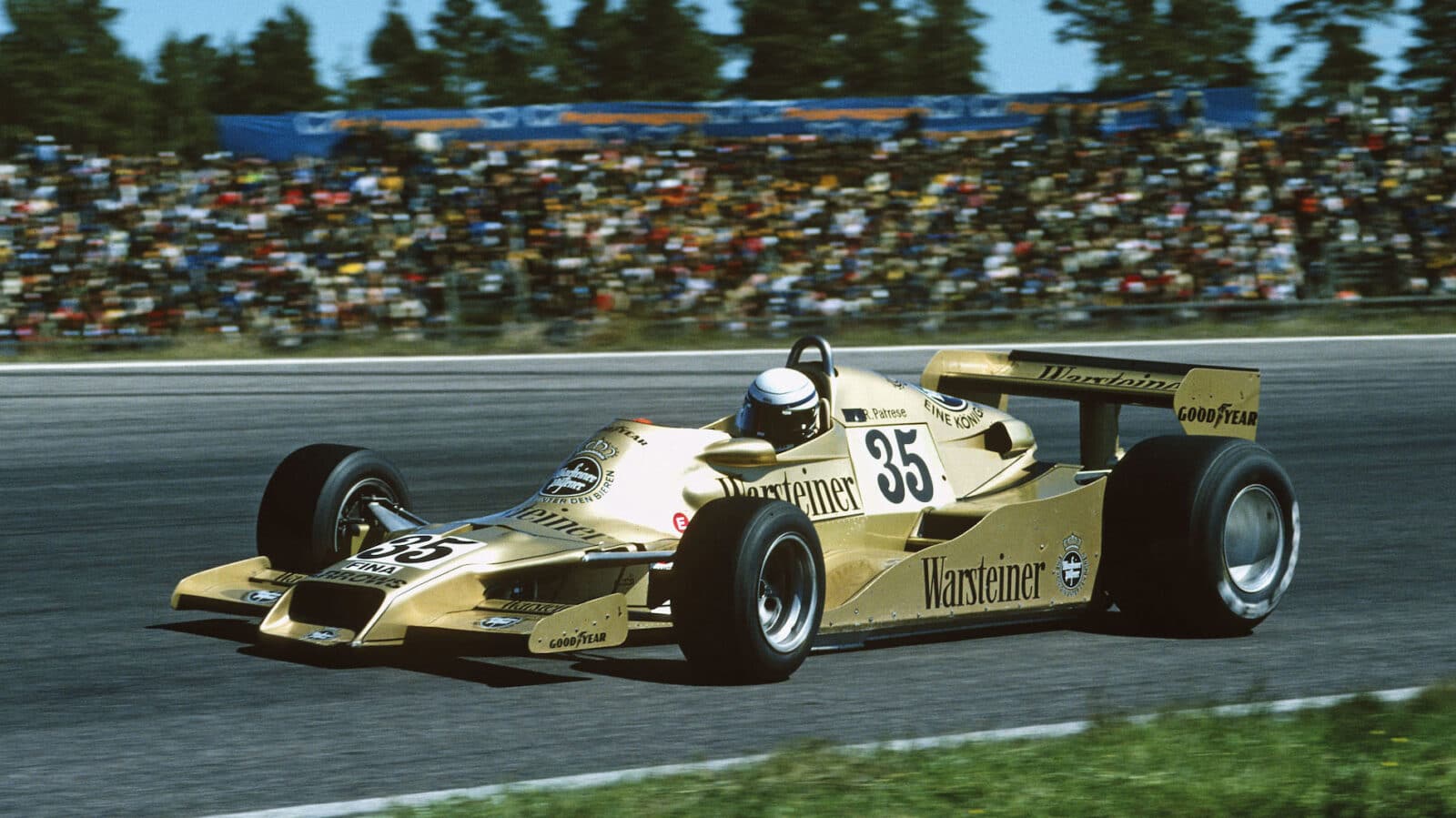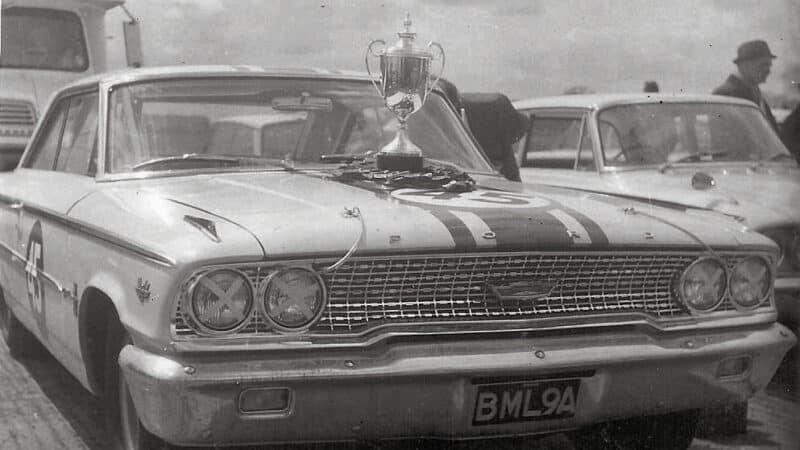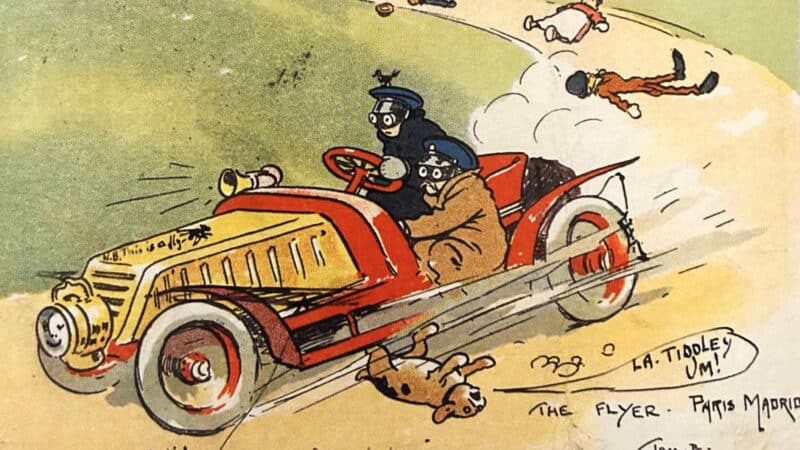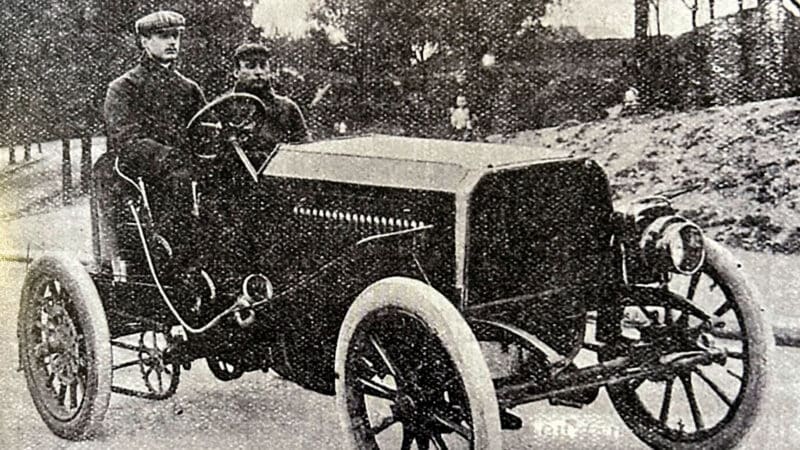Letters - October 2023

Had video been available at Monza in 1978, Riccardo Patrese might not have had such a rough ride
Grand Prix Photo
| In association with | ||

|
||
Star letter
Your excellent interview with Riccardo Patrese [The Motor Sport Interview, September] contained one small, but important, factual slip. The wording stated: “After the accident at Monza in 1978 [when Patrese’s Arrows clipped James Hunt’s McLaren at the start, triggering a mass pile-up]…”
The use of the word ‘clipped’ is incorrect. The loss of Ronnie Peterson in the aftermath of the Monza accident was, naturally, a hugely emotive subject. James Hunt, who so bravely pulled his friend from the burning Lotus, claimed in his Autosport column that Patrese “barged over on me, pushing me into Ronnie”. Film and photographic evidence gathered by Autosprint magazine in Italy unequivocally proved there was no contact between Patrese’s Arrows and the McLaren. Of course views differed as to what happened at the start of the race but as Riccardo has stated many times, his own conscience is clear and in October 1981, a lengthy legal inquiry finally and fully rejected the charge of manslaughter brought by the Italian authorities after Peterson died.
Jonathan Phillips, Windlesham & Michael Day, Eastbourne

Our featured letter of the month, chosen by the Editor, wins a scalextric Grand Prix race set prize. email your letters to the usual address
Poor Stefan Bellof – a lap record of 6min 11.13sec at the Nürburgring, under practice conditions, that stood for some 35 years is confined to a bottom of page timeline [Ringmasters, September]. It took me a couple of readings of Paul Fearnley’s top 20 to realise that he indeed did “stick his neck out” in complying his list. Maybe if he had reshuffled the list and relegated that old underachieving bore Stirling Moss to No21, then Stefan could rightly shine at No1.
Andrew Townsend, Notting Hill, Victoria, Australia
I enjoyed Paul Fearnley’s article (September issue) which discussed 20 Nürburgring ‘Ringmasters’, but I was surprised to see a significant omission – Niki Lauda.
As a consequence of his career-defining accident, Lauda’s name is inextricably linked with the Eifel circuit. Largely because of his outspoken comments in 1976 about the dangers of the track in the weeks before his fiery accident there, the Austrian has a reputation in some quarters as a Nürburgring hater. Some old-school journalists (DSJ in particular) blamed him for the removal of the grand old Nordschleife from the Formula 1 calendar, and this may detract from objective opinions about the Austrian’s performances there. In fact, Lauda had competed at the ’Ring from the earliest days of his career, and right up until his 1976 accident he was considered by many as a Nürburgring specialist.
In the 1973 Six Hours he set fastest lap in the brutal BMW 3.0 CSL, a new touring car record some 19sec quicker than he’d gone in the 24 Hours and over 36sec quicker than the old touring car record. Yet more significantly, he was the first driver to lap the Nordschleife in under 7min; first during tyre tests in May 1974, when he recorded an unofficial 6min 58.2sec in his Ferrari 312 B3, and a year later he made it official with his 6min 58.6sec pole lap for the German Grand Prix in the 312 T.
Lauda was perhaps not a Ringmeister in the Fangio/Moss/Ickx vein, but for those performances alone a place in the Top 20 of those who conquered the ’Ring would seem appropriate. And his survival of his 1976 shunt at Bergwerk was probably his greatest victory of all there.
Jon Saltinstall, Market Harborough
Reading the excellent Galaxie Edge article (August), I was stopped in my tracks by the comment: “Sadly, there are not too many around today who witnessed Gentleman Jack’s game-changing turn.”
Admittedly, 1963 may seem a lifetime ago but many of us are not only still around but might even have retained our marbles.
As a race-mad teenager back then, I happened to be at Copse on Saturday, May 11, 1963, eagerly awaiting the saloon car race.
Even at that young age I’d seen Dan Gurney’s magnificent Chevrolet Impala frighten the Jags at Silverstone in 1961. In 1962 Peter Sachs and Cal Kelsey ran Chevrolet Chevy IIs, without much success.

Star of the day: Jack Sears had the Galaxie flying against the Jaguars at Silverstone in 1963
So there I stood at Copse, fingers crossed, hoping that perhaps this time the huge Yank Tank could do the business. Into Copse they thundered, the Jaguars leading Jack Sears in the big Ford. Little did they realise, he was taking it easy. No sooner did he open up every one of those 427 cubic inches than the Stowe announcer yelled, “Sears is in front!” Sears then cruised to an easy victory, and the crowd, as they say, went wild. Later in the paddock, the trophy and wreath were displayed on the Ford’s ‘hood’.
A few weeks later at Crystal Place I saw the Willment Galaxie again, this time joined by Sir Gawaine Baillie’s brand-new Galaxie. It was said that the Fords would struggle at the Palace. Not so. Sears won again, easily.
Great memories, indeed. And, yes, it now seems a Galaxie far, far away!
Incidentally, the main picture on p108 is actually from the British GP saloon car race in July 1963, not the International Trophy meeting in May, where Baillie’s car was a DNA.
David Fox, Schwenksville, US
Riccardo Patrese was vilified by James Hunt to other drivers and the press following the death of Ronnie Peterson in Monza 1978 [The Motor Sport Interview, September]. But in the modern day of video on demand the opinions of people might have been quite different. Patrese’s Arrows may have clipped Hunt’s McLaren, but that was not the start of the cascade of events.
Monza 1978 started with lights, but not the modern five-light protocols. Today the lead cars are stationary for several seconds. However, in that race the two lead cars of Andretti and Villeneuve never stopped. This resulted in cars in the rear of the grid barely slowing down before seeing the green light and accelerating much faster than cars in front. The subsequent dicing to avoid each other caused the inevitable pile-up. This is how Hunt was swarmed in 10th by drivers like Patrese who started a row back in 12th. Hunt could not know the botched start had occurred. Video of the start was not accessible and most analysis in the press came from stills taken after the green light. It is clear that the starter, Gianni Rastelli, prematurely started the race before the grid had stopped. The death of Ronnie Peterson shocked everyone but the tragedy of that day was a combination of poor stewarding and a poor Italian medical response.
It was never fair to blame Patrese for a series of unfortunate events. His subsequent career of maturity and consistency in the next 15 years did not match Hunt’s definition of Patrese at the time.
Ray Truant, Hamilton, Canada
Two small comments about the review of Kim: A Biography of MG Founder Cecil Kimber [The man who gave Morris a sporting edge, September]. The Nuvolari TT car to which you refer was an NE, not a K3 like the Mille Miglia cars. (I have Nuvolari’s original hand-written Italian telegram to MG accepting the offer to run in the TT. I used to have the engine from that car but was able to reunite it with the car.)
Also, Kimber never saw servicemen in TCs nor TDs. Neither had been produced when he died in that unfortunate 1945 train accident.
Dean Butler, Worcestershire

Somewhat tasteless cartoon in the wake of the 1903 Paris-Madrid.
I read with interest Doug Nye’s account of the catastrophic 1903 Paris-Madrid [The Archives, August]. There were over 200 entries, and most were amateurs, but the race attracted some of the best racing drivers of the day. They included Charron, Charlie Rolls, Jarrott, Jenatzy and Louis and Marcel Renault. The only woman was Camille du Gast – a “Valkyrie with a mechanical steed.”

CS Rolls in his Panhard
Of the race, L’Illustration magazine wrote, “A traveller in the wake of the racers would have been confronted by a dreadful sight, machines upside down, smashed, broken, in pieces: inert bodies of men killed on the spot, of the injured, moaning or unconscious.”
In the 1903 Paris-Madrid, which became known as the Race of Death, 34 people died, spectators, drivers and riding mechanics. The great town-to-town road races were finished. Circuit races were about to begin.
David Baines, Buckingham
Growing up in the 1960s I was a huge fan of The Avengers and later of The Professionals. In your piece Cue the car chase [Matters of Moment, September] about those Capris driven by Bodie and Doyle you say that Brian Clemens found the British Leyland cars used in The Avengers unreliable. The cars in The Avengers were not BL cars. Who could forget Steed in his Bentley and Emma Peel in her Lotus Elan? No, the cars BL supplied were for The New Avengers. Still a wise choice to use the Fords. I could hardly picture Bodie and Doyle chasing baddies in an Allegro and a Marina.
Richard Branch, Hawley Green, Hants
I enjoyed the Racing into history article by Richard Williams in the August issue. I have always been fascinated by the 24 Hours after my father told me stories about it. My dream of going was fulfilled in 2019 when my son took me. After reading your review of 24 Hours: 100 Years of Le Mans [24 hours to flagfall, July] I had to read it. Unable to find it Stateside I ordered from Coles Books in the UK and can’t say enough about it! Thank you for the best magazine available.
Jim Kupstas, pennsylvania, US
Contact us
Write to Motor Sport, 18-20 Rosemont Road, London, NW3 6NE
e-mail, [email protected]
